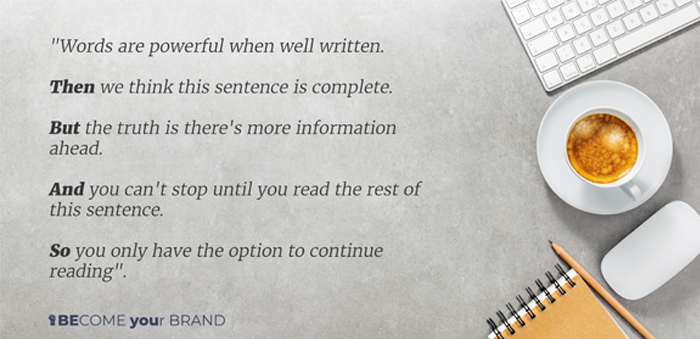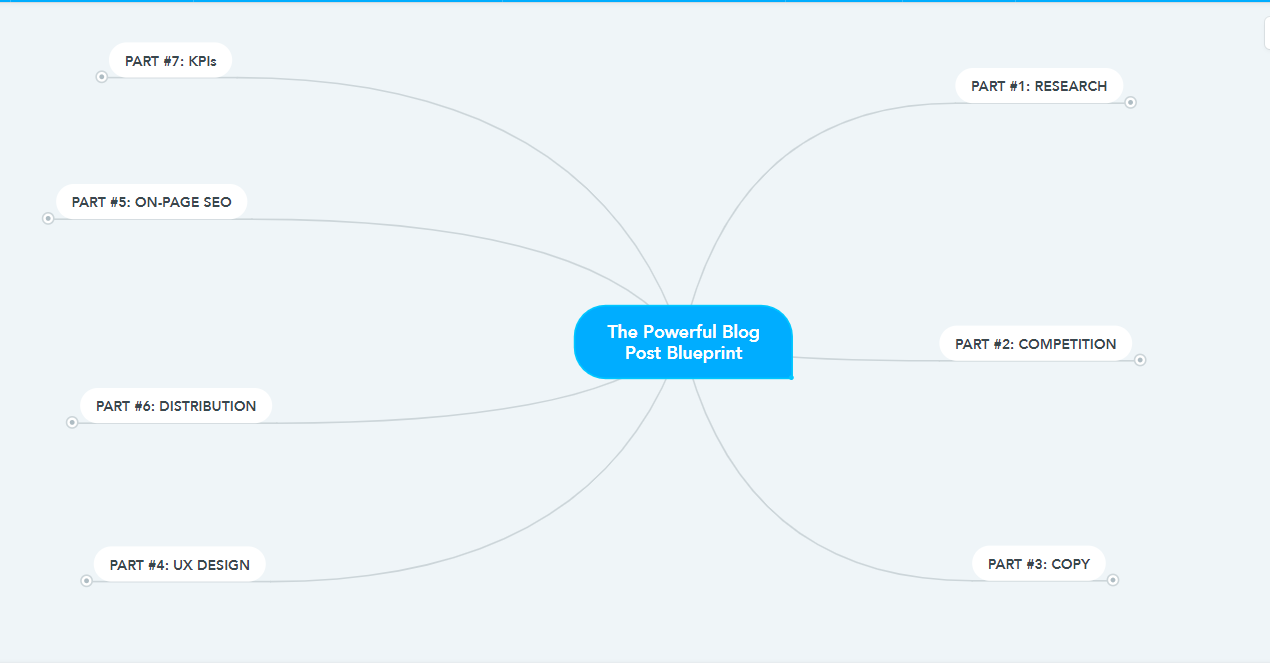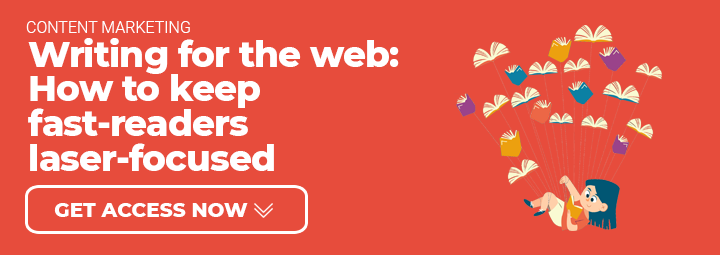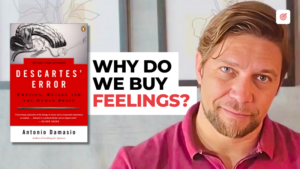How can you make a powerful blog introduction readers continue to read despite the topic?
Online readers are fast and they have plenty of options on their hands.
From skimming the page to reading the first words.
You have a few seconds to help your audience decide if they’re going to stick around.
With the birth of bounce rates, which is how fast people reject your content, things got even worse.
It became a serious threat to all your SEO efforts.
To produce a blog post your audience will love and share, first you must be able to deliver a blog introduction.
Writing is no easy task, I’ve got you.
The idea is to combine 5 blog introduction methods with 5 copywriting techniques.
Creating a compelling piece that draws attention instead of rejection.
Let me show you how it’s possible.
[bctt tweet=”You have a few seconds to help your audience decide if they’re going to stick around, making blog introductions a game-changer.”]
Keep reading to know more about:
Downloadable content in this article:
Useful links in this article:
The stark difference between life and death of your blog post

A bad blog introduction is the place where all the great ideas go to be forgotten.
Not just because people on your site are leaving…
… but because when someone does, Search Engines take that you don’t present the solution to that search query.
What happens next? Ranking drops to give space to other solutions.
High bounce rates mean that most of the people getting on your site are leaving before a single interaction.
It harms your site’s exposure preventing more people to find you.
This inputs a lot of pressure on your blog introduction.
You won’t have a second chance to cause a great first impression.
After producing a title impossible to be ignored to your article…
…introductions are the difference between the life and death of your blog post.
To better understand its power…
…let me tell you how they were the one thing between failure and success of two great industries you know of.
The power of introductions: The birth of toothpaste

In the early 1900s, a prominent American executive named Claude C. Hopkins was approached by an old friend with a new business idea.
The friend had discovered a product that he thought would be a hit: A minty, frothy paste called Pepsodent.
All he needed was Hopkins’s consent to help designing a national promotional campaign.
The birth of modern advertising.
Hopkins was the man who had convinced Americans to buy Schlitz beer by boasting that the company cleaned their bottles “with live steam”…
…neglecting to mention that every other company used the same method.
He had convinced millions of women into purchasing Palmolive soap by proclaiming that Cleopatra had washed with it…
…despite the sputtering protests of outraged historians.
He made Puffed Wheat famous by saying that it was:
“shot from guns until the grains puffed to eight times normal size”.
Hopkins had turned dozens of unknown products like:
- Quaker Oat;
- Goodyear tires;
- Bissel carpet sweeper.
Into household names.
And he had made himself so rich…
…that his best-selling book, My Life in Advertising, shows the troubles of spending it.
The problem with the product potential.
When his old friend approached him about Pepsodent, the adman showed little interest.
It was no secret that the health of Americans’ teeth was in decline.
People were buying more sugary processed food as the nation had become wealthier.
But despite the nation’s dental problems, most people didn’t brush their teeth.
Hopkins declined saying that he didn’t see a way to educate people around this matter.
But the friend was persistent.
He came back again and again, appealing to Hopkins consider his business proposal.
Hopkins finally gave in, as he wrote:
“I finally agreed to undertake the campaign if he gave me a six months option on a block of stock.“
It would be the wisest financial decision of Hopkin’s life.
Pepsodent became one of the best-known products on earth in five years.
It established toothbrushing as a daily activity among any population on the planet.
From Clark Gable to Shirley Temple, people were bragging about their “Pepsodent smile”.
By 1930, Pepsodent was a hit in China, South Africa, Brazil, Germany, and more.
Hopkins secret weapon: introduction.
The secret to this success was how Hopkins found a way to introduce Pepsodent to that audience.
What did Hopkins do?
Studying several dental textbooks, he found a trigger to justify toothpaste daily use:
The mucin plaques.
Mucin plaques are a natural membrane that builds up on teeth regardless of what you eat or how often you brush.
Hopkins rename the term to “the film” and introduced toothpaste as a creator of beauty.
It has always covered people’s teeth and it hadn’t bothered anyone.
Why?
Because you can get rid of the film by eating an apple, running your finger or tongue through your teeth.
Toothpaste was not solving a problem, exactly.
Leading dental researches at that time said that Pepsodent’s idea was worthless.
Despite criticism, Pepsodent ads were everywhere:
“Just run your tongue across your teeth. you’ll feel a film? That’s what makes your teeth look off-colour and invites decay. Note how many pretty teeth are seen everywhere.“
Another ad featuring smiling beauties:
Millions are using a new method of teeth cleansing. Why would any woman have a dingy film on her teeth? Pepsodent removes the film.
I’m not discussing Hopkins’s ethical approach (or absent) to this.
The case I’m making is…
…the way you introduce a product is how people will consume it.
And not because of the product itself, despite the odds of the market and the social consensus.
The power of introduction: The short story of movie trailers

Nils Granlund, advertising manager at MGM, presented the first theatrical trailer in history.
It was 1912 and the trailer was about an upcoming broadway musical.
Granlund edited together footage of the show. The idea was to present this advertising after the featured movie.
That’s why it’s called trailer.
Because they came attached to the back of the featured film, metaphorically speaking.
All the film industry borrowed the idea by presenting brief parts of the next pieces at the end of each movie.
In the 1930s, producers became concerned with people leaving the theatres before the trailers.
To turn the table, they began showing them before the featured movie.
As people were already used to call them trailers, the name stuck.
Trailers are today a top marketing asset to determine a movie reception to the audience.
Trailers are forms of introduction. Producers consider them the million-dollar difference for a blockbuster box office.
Like trailers, a blog introduction determines the following actions of your audience.
The Powerful 5-Method Blog Introduction

Why is it so hard to start writing a blog post? Because introductions need introductions.
To unstuck and present a persuasive copy, you need a process.
- When to write a blog introduction;
- How to start the introduction;
- What approaches you can use.
When to write a blog introduction.
An article requires lots of different tasks.
We can group these tasks into 7 stages:
- The Research phase;
- The competition analysis phase;
- The writing phase;
- The UX design phase;
- The SEO phase;
- The promotion phase;
- The result analysis phase.
Having these stages well organized as a workflow is a huge professional touch.
The writing phase starts with your first draft and ends with your revision process done.
In short, your blog introduction should be the last piece of the writing phase because you need your entire idea set to make a coherent presentation to that.
If you can, leave the copy to rest for a day after the revision process to start producing your introduction.
Blog Introduction Method #1: Questions

Questions are emotional loops of curiosity that open in the readers’ minds to be closed later on.
When you read a question like:
“Have you felt it, too?”
Your mind can’t ignore the fact that there’s incomplete information needing closure.
Article with this blog introduction method:
How to apply:
- Make a question opening the blog post;
- It must be about the main issue or promise of the blog post;
- Quick answer it with bullet points.
Blog Introduction Method #2: Stories

The vision of the world we have now is the result of countless stories heard.
Stories create a sense of “us” and they are a primary source of inspiration towards a brand.
Storytelling can have 3 points-of-view and each one produces different types of engagement.
Storytelling points-of-view:
- First person;
- Second person;
- Third person.
The first-person viewpoint is confessional. The storyteller can discuss a particular case that happened to them.
It’s characterized by the use of “I” as expressing personal viewpoints.
The second-person viewpoint is empathetic. The storyteller talks to the audience directly.
It’s characterized by the use of “you” to establish a one-on-one conversation.
The third-person viewpoint is to present examples. The storyteller borrows authority and relevance from a source other than himself.
It’s characterized by the use of “he/she/they” to present someone else’s vision about a topic.
An example of this blog introduction:
How to write a blog post your audience will love and share: the SDSR technique.
How to apply:
- Use stories founded in common sense so readers can relate;
- Use stories about recent facts, especially dramatic ones;
- Use stories aligned with your buyer’s persona conflict.
Blog Introduction Method #3: Quotes

Quotes summarize great ideas in short but powerful statements.
And they can put you in a more profound level of authority and admiration to your reader.
It’s a good way to start an introduction when you’re lacking inspiration.
An example of this blog introduction:
Ways to make money online: the 5 hidden truths nobody has ever told you (until now).
How to apply:
- Use market-known characters to cite quotes from;
- Make it related to the content but don’t explain it;
- Write it down, don’t use text in images, and always cite the author
Blog Introduction Method #4: Statistics

People with analytical intelligence connect better when you offer data-driven content.
Statistics reinforce knowledge and authority in a subject.
This model shows the audience you’re relying on facts and not just something you think of.
An example of this blog introduction:
How to apply:
- Use real and updated data related to the content;
- Always present a linkable source;
- Use the data to make a case, not just to use them.
Blog Introduction Method #5: Problem

People go online looking for 2 things: entertainment and information. Information solves problems, a human instinct of survival.
The entire Inbound Marketing Strategy relies on solving people’s problems.
An example of this blog introduction:
How to apply:
- Use the article’s Focus Keyword as the source of the problem;
- Show you understand the problem by being specific;
- Present practical advice, not theoretical explanations.
Talking about the problem is not the same as solving the problem.
You must keep in mind that your audience needs practical takeaways from your article.
What can they do with the information you provide?
Summarize it in the introduction as a preview of the content. You can do that using real examples and bullet points.
[bctt tweet=”Your blog introduction should be the last piece of the writing phase because you need your entire idea set to make a coherent presentation to that.”]
Writing techniques: 5 powerful tips to make your blog introduction bounce rate proof

The 5 blog introduction methods are one thing, another is the skills to produce content with it.
Learn how to create a written piece everyone will love to read and share is the next step in our exploration.
This is what you need:
- Transition words;
- The Rule of 3;
- Words repetition;
- Skimmability;
- Metaphors, comparisons and analogies.
Let’s dive into each one of them.
1) Transition words

The goal of a word, sentence, and paragraph is to stimulate the reader to read the next one. How to make a written piece so connected?
Transition words are the solution.
Take two sentences like:
- People want to write compelling blog introduction.
- They don’t know how.
An example of how to connect these two sentences using a transition word is:
People want to write compelling blog introduction but they don’t know how.
It’s almost impossible to read the first sentence ignoring the second. There’s a flow in the text that’s hard to break.
Categories and examples:
- Illustration: for example, in particular, such as;
- Contrast: but, however, or;
- Addition: besides, also, another;
- Time: after, then, later;
- Space: nearby, above, around.
- Concession: still, though, at least;
- Similatrity: likewise, as, like;
- Details: indeed, truly, in fact;
- Examples: for instance, in other words;
- Consequence: so that, hence, so;
- Summary: finally, in short, as a result;
- Suggestion: with thi in mind, to this end;
These words are so common that you might think they don’t produce any effect, but that’s why they do.
The goal is not to make them jump out of the text but blend in so no one notices.
When to use transition words?
The idea behind transition words is to connect ideas and, as a consequence, make the text more fluid.
There are 2 situations where you need them:
- Between sentences;
- Between paragraphs.

Did you notice how these simple words connect 5 sentences in one?
The problem with transition words is the word bloat.
When your audience’s lower ends start to feel that there’s something odd about it.
This is the rule you must follow:
- Between sentences: mandatory;
- Between paragraphs: When necessary.
How to judge if it’s necessary?
Part of the revision process is to read your text out loud. As a takeaway, you must be able to:
- Rearrange paragraphs;
- Rearrange sentences;
- Trim down the word bloat (including unnecessary transition words).
If your out loud reading shows your copy doesn’t need them, don’t second guess your guts.
2) The Rule of 3

Have you ever wondered what…
- The 3 little pigs;
- The 3 blind mice;
- Goldilocks and the 3 bears;
- The 3 Musketeers;
- The 3 Wise Men;
- The 3 Stooges.
…have in common?
The Rule of 3!
What’s so special about the number 3?
It all comes down to the fact that the human brain evolved to perceive patterns as a survival instinct.
It’s useful to know that a bush moving on a not windy day might be a sabertooth tiger lurking around.
We developed all sorts of patterns to govern our lives based on this evolutionary skill:
- Cycles of the moon, the sun, and the seasons;
- The days, years, and decades;
- The animal migration, food chain, and species.
To establish a pattern, we need repetition.
To produce compelling content, we need brevity.
So the least number of elements required to produce a pattern is 3.
How to use it:
Use it as 3 examples in a sentence:
- Government of the people, by the people, for the people;
- Blood, sweat and tears;
- Life, liberty, and the pursuit of happiness.
Use it as 3-elements bullet points just as I did right above.
It’s more likely that people skimming your content will stop at these points.
3) Word repetition

Use short sentences with the same term at the beginning of each one of them to reinforce or highlight a concept.
Read this example:

Did you see the magic?
By repeating the same term at the same spot in all the sentences, I created a rhythm to the text, like pray or poetry.
Also, I combined it with the Rule of 3 to keep it short and the reader doesn’t “wake-up” from it.
Another example of its use:

The rhythm produced by the word repetition forces a flow even with a period after each sentence.
This is a great way to exchange Transition Words and avoid using only one technique to make your copy fluid.
Also, This time I used synonyms.
Why?
Word repetition can’t sound like you don’t have the vocabulary to present your content.
The goal is to produce a rhythm, a pace, and a concept, but it must be invisible to produce flow.
- Combine it with the Rule of 3;
- Use synonyms if your copy loses rhythm;
- Don’t overuse it.
4) Skimmable content

There’s a myth that you shouldn’t write long blog posts because people won’t read it.
And here you are!
Yet, overexposure produces a deficit of attention.
The tug-of-war effect:
A not long time ago in a galaxy not far away…
We used to watch series based on episodes released every week. This was before Netflix came throwing whole seasons on our faces.
What happened next?
Instead of losing interest in watching them, people created marathons!
Produce loads of content and keep the reader’s interest is like playing tug-of-war.
- On one side, people have your content;
- On the other, they have all the online distractions possible;
- The game is to pull them stronger into the content.
How to win the game?
Series use relevant topics, plot twists, talented actors, and cliffhangers to keep you watching over hours.
But there are invisible aspects that make you a marathoner.
A movie with a bunch of characters ends up having hundreds of people appearing in the credits.
Without them, the movie wouldn’t be possible.
When somebody finds your content online…
…your blog introduction pulls the rope on one side and other online distractions pull on the other.
Skimmable is content with these “invisible aspects” that make your piece marathon worth.
9 ways to make your copy skimmable:
- Blank space;
- Contextual images;
- Highlights;
- Bullet points;
- Headings;
- Short Paragraphs;
- Font settings;
- Anchor links;
- Readability score.
F-shaped pattern compliance
Blog posts readers are bound to an F-shaped reading pattern.

This heatmap shows two horizontal lines followed by a vertical stripe, making a shape of an “F”.
The horizontal lines are headings, the vertical stripes are paragraphs.
Fast online readers skim the content and stopping at specific points of interest.
5) Metaphors, comparisons and analogies

“You dream of getting out of point A (where you are) to reach a goal, point B.
Yet, you are not sure how to travel this path.
Something in you knows that you are destined to greatness.
But you are afraid, anxious, and you lack knowledge and skill.
These are the factors that keep you from achieving your biggest dreams and goals.
Now imagine if you had a map in hand. A true guide that shows you the step-by-step process to get you from point A to point B.
A guide with shortcuts to walk faster and tips to avoid the biggest dangers along the way.
And, like magic, your fear, anxiety and lack of knowledge turn into confidence, energy and wisdom to follow this journey to change your life.
You now have only two decisions: Stay still watching your dreams and goals get farther and farther…
Or decide to fight for what is yours. Go this way to achieve your success and live the life you have always dreamed of”.

Metaphors, comparisons, and analogies restore the life of a piece of content when it’s off rhythm or complex.
They work as mental triggers that allow the readers to store information through a story.
[bctt tweet=”Use these 5 writing techniques with the Powerful 5-method blog introduction together. Engagement will skyrocket.”]
PS: What to do when writing a blog introduction becomes painful
Make 2 primary assumptions when you feel stuck:
Your knowledge of the subject is low and/or you don’t have a clear structure to follow.
- Knowledge;
- Structure.
Increase knowledge by reading and clipping content. Keep the content stored using categories and tags.
Here’s a method to increase knowledge fast:
- Create lists of books to read on Amazon
- Read a book using the Kindle app;
- Highlight the passages of your interest;
- Send the highlights to your email;
- Clip the attached file to Evernote.
- Set a reminder to read the highlights in 3 months.
- Keep the wheel spinning.
A structure is a repeatable process that saves you time and effort.
Having a blog post structure will help you focus on the writing.
Here, at BECOME your BRAND, we use this exact process below:
The Powerful Blog Post Blueprint:
- The Research phase;
- The competition analysis phase;
- The writing phase;
- The UX design phase;
- The SEO phase;
- The promotion phase;
- The result analysis phase.
Here’s a mind map of the structure.

May you find that introductions are the starking difference between the life and death of your content.
May you turn wounds into wisdom through educational content.
May you freeze time with the power of these 5-method blog introduction and 5 writing techniques.
[bctt tweet=”These are the 2 things you must do when writing a blog introduction becomes painful.”]




